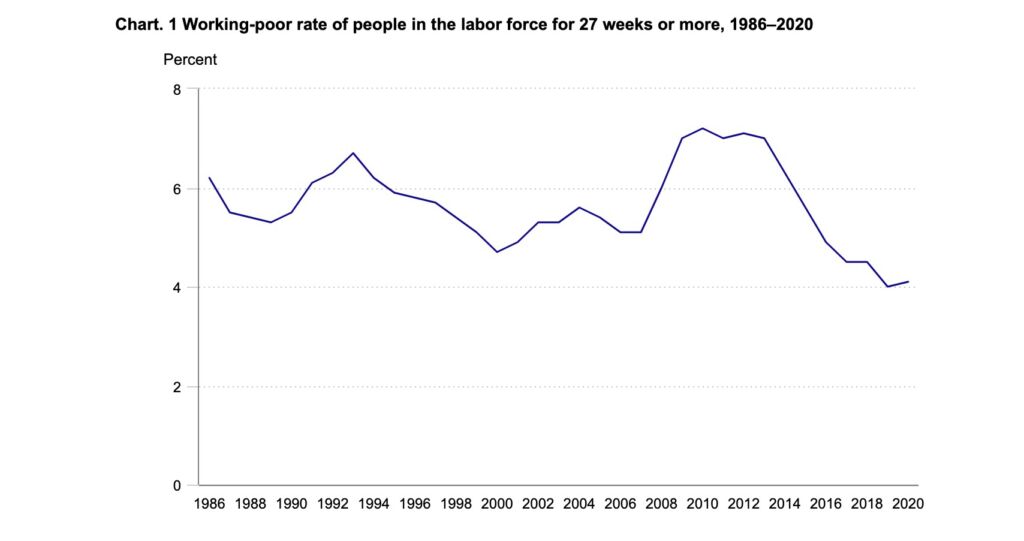What to know about the working poor and how to best help them
Among the working population, only a tiny segment can be considered poor. This is because the population of people in poverty mainly consists of adults who are not in the labor force, as well as children. Nevertheless, there are still people in the labor force living below the federal poverty level.
According to the Burea of Labor Statistics (BLS), in 2020, 6.6 million workers or 4.1 percent of the labor force were considered the working poor — i.e., people who spent at least 27 weeks in the labor force (that is, working or looking for work) but whose incomes still fell below the official poverty level.
Who are the working poor?
As a proportion of the labor force, the share of the working poor is lower than it was in 1986. After peaking in 2010, it has gone down consistently since then but changed very little between 2019 and 2020.

Poverty is mostly common among people who don’t work, but among those who work, poverty is an interplay of three factors: education levels, type of work, and how much they work.
According to the Bureau of Labor Statistics, most poor workers work part-time.
Full-time workers remained much less likely to be among the working poor than part-time workers. Among people in the labor force for 27 weeks or more, 2.6 percent of those usually employed full time were classified as working poor, compared with 10.2 percent of part-time workers.
They are more likely to be uneducated,
The likelihood of being classified as working poor diminishes as workers attain higher levels of education. Among those with less than a high school diploma, 13.0 percent of those who were in the labor force for at least 27 weeks were classified as working poor, compared with 1.3 percent of those with a bachelor’s degree and higher.
and more likely to work in low-productive sectors, like the service industry.
Individuals who were employed in service occupations remained more likely to be among the working poor than those employed in other major occupational groups
Other ethnic characteristics
The working poor are also generally more concentrated among certain ethnic and racial groups.
Women were more likely than men to be among the working poor (4.6 percent and 3.6 percent, respectively). In addition, Hispanics or Latinos (7.4 percent) and Blacks or African Americans (6.7 percent) continued to be much more likely than Whites (3.7 percent) and Asians (2.6 percent) to be among the working poor.
This is potentially because such groups are more likely to possess other labor force characteristics that are associated with poverty.
Black and Latino individuals, for example, are more likely to be less educated and work in the service sector. Asians on the other hand, are more likely to be educated and be employed in management or professional occupations.
Increasing productivity is the best way to help the working poor
Workers who are highly educated, work full-time, and are employed in non-service — or more productive industries — are less likely to be poor. Economically, this can be explained in terms of productivity. Highly educated people have high levels of human capital and work in more productive sectors — which often require some advanced skills. These sectors are also more likely to employ people full-time and have predictable and regular schedules.
It stands to reason then that the most effective and sustainable way to move workers out of poverty is to encourage human capital accumulation. As workers become more skilled, they are able to move into highly productive, high-paying industries.
Any policy that seeks to move workers out of poverty but does nothing to improve their productivity is merely a bandaid.